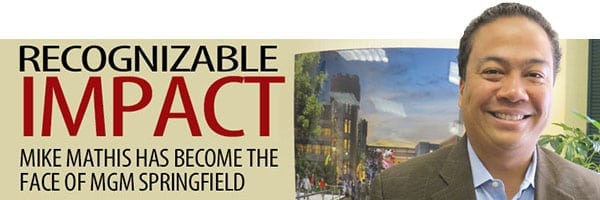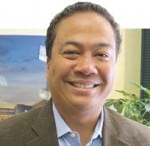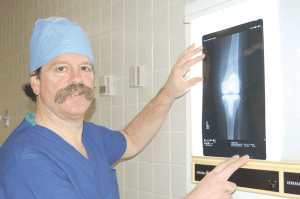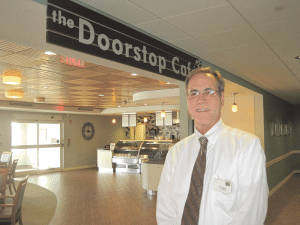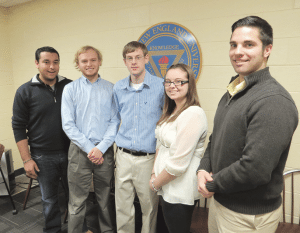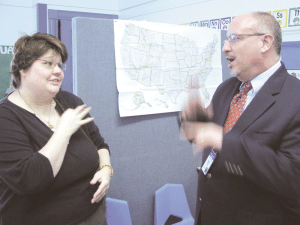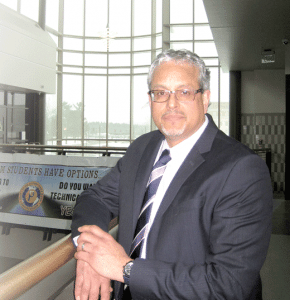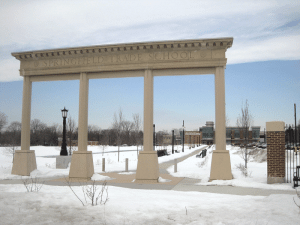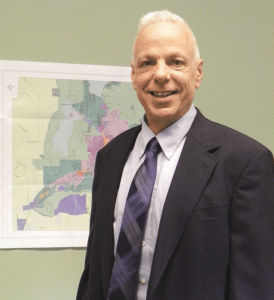The following real estate transactions (latest available) were compiled by Banker & Tradesman and are published as they were received. Only transactions exceeding $115,000 are listed. Buyer and seller fields contain only the first name listed on the deed.
FRANKLIN COUNTY
BUCKLAND
119 Charlemont Road
Buckland, MA 01338
Amount: $150,000
Buyer: Todd Seavey
Seller: Vicky Seavey
Date: 01/29/14
CHARLEMONT
57 Warner Hill Road
Charlemont, MA 01339
Amount: $156,000
Buyer: Thomas M. Pariseau
Seller: Academy At Charlemont
Date: 02/04/14
COLRAIN
21 Heath Road
Colrain, MA 01340
Amount: $155,000
Buyer: Heather Staas
Seller: Mutch, Duncan D., (Estate)
Date: 02/07/14
DEERFIELD
Greenfield Road
Deerfield, MA 01342
Amount: $300,000
Buyer: Deerfield Academy
Seller: Richard W. Wilby
Date: 01/28/14
72 Mill Village Road
Deerfield, MA 01373
Amount: $117,500
Buyer: Mark E. Gilmore
Seller: Griffith, Pauline E., (Estate)
Date: 02/04/14
GREENFIELD
177 Conway St.
Greenfield, MA 01301
Amount: $116,616
Buyer: FNMA
Seller: Elissa Rose
Date: 01/30/14
52 Country Club Road
Greenfield, MA 01301
Amount: $242,000
Buyer: David W. Britt
Seller: Nancy J. Baldwin
Date: 01/31/14
186 High St.
Greenfield, MA 01301
Amount: $193,987
Buyer: FHLM
Seller: Ricardo A. Fernandes
Date: 02/07/14
219 High St.
Greenfield, MA 01301
Amount: $184,000
Buyer: Kimberly J. Zabek
Seller: Clifford B. Long
Date: 01/31/14
93 High St.
Greenfield, MA 01301
Amount: $391,000
Buyer: Benegan LLC
Seller: Freehigh LLC
Date: 01/31/14
9 Holland Ave.
Greenfield, MA 01301
Amount: $230,000
Buyer: Lawrence Channel
Seller: Jocelyn M. Barnes
Date: 01/31/14
85 Phyllis Lane
Greenfield, MA 01301
Amount: $137,900
Buyer: Brooks A. Mostue
Seller: Szulborski, Rudolph W., (Estate)
Date: 02/07/14
5 Verde Dr.
Greenfield, MA 01301
Amount: $255,000
Buyer: Angelo L. Thomas
Seller: Govind R. Patel
Date: 01/31/14
HEATH
52 Burrington Road
Heath, MA 01346
Amount: $181,000
Buyer: Adam Ruhf
Seller: Jens Lindgren
Date: 02/07/14
LEVERETT
14 Lead Mine Road
Leverett, MA 01054
Amount: $310,000
Buyer: Marinos Vouvakis
Seller: Mary J. Kennedy
Date: 02/06/14
MONTAGUE
18 Winthrop St.
Montague, MA 01349
Amount: $146,500
Buyer: Abigail R. McGuigan
Seller: Roberta J. Billiel
Date: 02/07/14
NORTHFIELD
18 Hotel Road
Northfield, MA 01360
Amount: $450,000
Buyer: NGC Realty LLC
Seller: Northfield Mt. Hermon School
Date: 01/28/14
ORANGE
454 East River St.
Orange, MA 01364
Amount: $115,000
Buyer: Donald F. McHugh
Seller: Jeffrey K. Mosher
Date: 01/31/14
118 Eagleville Road
Orange, MA 01364
Amount: $220,000
Buyer: Brian Linstad
Seller: William A. Spooner
Date: 01/27/14
420 Mayo Road
Orange, MA 01364
Amount: $299,900
Buyer: Joshua A. Page
Seller: Robert A. Goodine
Date: 01/31/14
44 Meadow Lane
Orange, MA 01364
Amount: $167,516
Buyer: MHFA
Seller: Alan Notre
Date: 01/28/14
SHELBURNE
240 Colrain Shelburne Road
Shelburne, MA 01370
Amount: $608,500
Buyer: Graham Lawes
Seller: David Crutcher
Date: 02/03/14
SHUTESBURY
450 Pelham Hill Road
Shutesbury, MA 01072
Amount: $195,000
Buyer: Kasey J. Grant
Seller: Laurie J. Doubleday
Date: 02/07/14
WARWICK
216 Old Winchester Road
Warwick, MA 01378
Amount: $173,600
Buyer: Justin Costa
Seller: Nicolas J. Melvin
Date: 01/31/14
HAMPDEN COUNTY
AGAWAM
83 Horsham Place
Agawam, MA 01030
Amount: $215,000
Buyer: Ashley E. Cote
Seller: Romano M. Daniele
Date: 01/27/14
102 Lealand Ave.
Agawam, MA 01001
Amount: $185,000
Buyer: Katie A. Johnson
Seller: Eugene S. McLean
Date: 01/27/14
50 Primrose Lane
Agawam, MA 01001
Amount: $235,000
Buyer: Nico A. Connor
Seller: Francis A. Connor
Date: 02/07/14
19 Royal St.
Agawam, MA 01001
Amount: $125,000
Buyer: Vadim Nazarets
Seller: FNMA
Date: 01/31/14
7 Ruth Ave.
Agawam, MA 01001
Amount: $120,000
Buyer: Carol A. Skorupski
Seller: Heather M. Staas
Date: 01/29/14
94 Senator Ave.
Agawam, MA 01001
Amount: $228,000
Buyer: Sherry Goyette
Seller: Thomas Fountain
Date: 01/29/14
BLANDFORD
17 South St.
Blandford, MA 01008
Amount: $255,000
Buyer: Thomas J. Ryan
Seller: Richard A. Peloquin
Date: 01/27/14
BRIMFIELD
25 Warren Road
Brimfield, MA 01010
Amount: $230,000
Buyer: Thibeault Properties LLC
Seller: Robert H. Murray
Date: 01/31/14
CHICOPEE
127 Blanchwood Ave.
Chicopee, MA 01013
Amount: $115,000
Buyer: Krzysztof A. Smolucha
Seller: Larry J. Davis
Date: 02/07/14
388 Broadway St.
Chicopee, MA 01020
Amount: $330,000
Buyer: North Harlow 2 LLC
Seller: Sharon I. Riley
Date: 01/27/14
352 Chicopee St.
Chicopee, MA 01013
Amount: $187,000
Buyer: Jennifer L. O’Grady
Seller: Virginia M. Bateman
Date: 01/31/14
43 Dallaire Ave.
Chicopee, MA 01020
Amount: $159,500
Buyer: Domingo M. Martinez
Seller: Paul E. Martel
Date: 01/30/14
1191 Grattan St.
Chicopee, MA 01013
Amount: $174,500
Buyer: Joseph A. Heckman
Seller: Theresa A. Lamothe
Date: 01/31/14
75 Ludger Ave.
Chicopee, MA 01020
Amount: $115,000
Buyer: John O. Menard
Seller: Norman A. Belisle
Date: 02/07/14
55 Nash St.
Chicopee, MA 01013
Amount: $116,236
Buyer: FNMA
Seller: Michelle A. Taylor
Date: 01/27/14
76 Rzasa Dr.
Chicopee, MA 01013
Amount: $239,900
Buyer: John S. Godin
Seller: Jorge Morgado
Date: 02/07/14
161 Vadnais St.
Chicopee, MA 01020
Amount: $155,048
Buyer: US Bank
Seller: Herman C. Mendez
Date: 02/03/14
EAST LONGMEADOW
52 Allen St.
East Longmeadow, MA 01028
Amount: $195,000
Buyer: Mark Piotrowski
Seller: Michelle Daley
Date: 01/29/14
97 Bayne St.
East Longmeadow, MA 01028
Amount: $195,000
Buyer: Casey Christensen
Seller: Beverly J. Midwood
Date: 01/28/14
17 Harris Dr.
East Longmeadow, MA 01028
Amount: $178,500
Buyer: Derek R. Samble
Seller: USA VA
Date: 01/31/14
51 Schuyler Dr.
East Longmeadow, MA 01028
Amount: $143,988
Buyer: Cori L. Savio
Seller: Leon A. Osborne
Date: 01/29/14
157 Smith Ave.
East Longmeadow, MA 01028
Amount: $215,000
Buyer: Bilal Khalid
Seller: Daniel K. Saia
Date: 02/03/14
15 Wilder Lane
East Longmeadow, MA 01028
Amount: $220,000
Buyer: Shane R. Saunders
Seller: Irene C. Bernacki
Date: 01/30/14
GRANVILLE
910 Beech Hill Road
Granville, MA 01034
Amount: $225,000
Buyer: Gary E. Ransom
Seller: William J. Winn
Date: 02/07/14
HOLLAND
3 Causeway Road
Holland, MA 01521
Amount: $195,000
Buyer: Jessica Hilyard
Seller: Norman T. Godard
Date: 01/27/14
HOLYOKE
701 Kelly Way
Holyoke, MA 01040
Amount: $2,140,000
Buyer: KWHP LLC
Seller: 701 Kelly Way LLC
Date: 02/06/14
23 Magnolia Ave.
Holyoke, MA 01040
Amount: $140,000
Buyer: Austin W. Ballard
Seller: John P. Cadigan
Date: 01/29/14
69 Portland St.
Holyoke, MA 01040
Amount: $135,000
Buyer: Mildred Hernandez
Seller: Ryan, Margaret E., (Estate)
Date: 01/31/14
214 Southampton Road
Holyoke, MA 01040
Amount: $316,000
Buyer: Michael T. Clark
Seller: Miguel A. Rivera
Date: 02/04/14
29 Upland Road
Holyoke, MA 01040
Amount: $180,000
Buyer: John J. O’Connor
Seller: Donald A. Cooper
Date: 02/07/14
122 Waldo St.
Holyoke, MA 01040
Amount: $138,000
Buyer: Kelly L. Moore
Seller: T&Y Enterprises Inc.
Date: 01/31/14
LONGMEADOW
30 Clairmont St.
Longmeadow, MA 01106
Amount: $455,000
Buyer: Morris M. Fontenot
Seller: Glenn E. Lafountain
Date: 01/29/14
201 Converse St.
Longmeadow, MA 01106
Amount: $214,000
Buyer: Catherine C. Lafountain
Seller: Padruig P. Anderson
Date: 01/29/14
29 Franklin Road
Longmeadow, MA 01106
Amount: $201,000
Buyer: Jonathan M. Zobel
Seller: Patricia L. Hannon
Date: 01/31/14
1596 Longmeadow St.
Longmeadow, MA 01106
Amount: $227,000
Buyer: Elizabeth A. Dimeo
Seller: Philip N. Clark
Date: 01/30/14
190 Nevins Ave.
Longmeadow, MA 01106
Amount: $174,000
Buyer: Jeffrey Cohen
Seller: Over Bars LLC
Date: 01/27/14
LUDLOW
69 Massachusetts Ave.
Ludlow, MA 01056
Amount: $170,000
Buyer: James D. Kurtz
Seller: Raymond S. Suleski
Date: 01/28/14
12 Moody St.
Ludlow, MA 01056
Amount: $134,000
Buyer: NND LLC
Seller: Norman S. Belben
Date: 01/29/14
17 Parker Lane
Ludlow, MA 01056
Amount: $135,000
Buyer: Christopher B. Chutkowski
Seller: Whitetail Wreks LLC
Date: 02/07/14
229 Parker Lane
Ludlow, MA 01056
Amount: $361,600
Buyer: Alan R. Aubin
Seller: Mark J. Rodriquenz
Date: 02/03/14
124 Prospect Gardens
Ludlow, MA 01056
Amount: $127,900
Buyer: Ronald L. Schneider
Seller: Daniel D. Pereira
Date: 02/07/14
260 Prospect St.
Ludlow, MA 01056
Amount: $133,000
Buyer: Krista L. Ouimette
Seller: Harry C. Madsen
Date: 01/29/14
MONSON
15 Green St.
Monson, MA 01057
Amount: $163,000
Buyer: Peter F. Matrow
Seller: Paul A. Matrow
Date: 01/31/14
18 Robbins Road
Monson, MA 01057
Amount: $185,000
Buyer: Gary L. Depace
Seller: Gaj, Max T. Jr., (Estate)
Date: 01/31/14
9 Silva St.
Monson, MA 01057
Amount: $143,190
Buyer: Mary Curran-Lima
Seller: Joseph S. Bolduc
Date: 01/31/14
65 Stafford Hollow Road
Monson, MA 01057
Amount: $198,186
Buyer: JP Morgan Chase Bank
Seller: Janet Langelier
Date: 02/06/14
PALMER
6 Carriage Dr.
Palmer, MA 01069
Amount: $284,500
Buyer: Roger Kuneyl
Seller: James J. Rocha
Date: 01/30/14
376 Rondeau St.
Palmer, MA 01069
Amount: $255,000
Buyer: Dorota Cygan
Seller: Colette R. Wesolowski
Date: 02/07/14
RUSSELL
77 River St.
Russell, MA 01071
Amount: $152,000
Buyer: Frank J. Figueroa
Seller: James Vansickle
Date: 01/30/14
SOUTHWICK
24 Birchwood Road
Southwick, MA 01077
Amount: $165,000
Buyer: Holly L. Johnson
Seller: Michael T. Clark
Date: 02/04/14
SPRINGFIELD
719 Allen St.
Springfield, MA 01118
Amount: $124,000
Buyer: Couture Partners LLC
Seller: Phyllis A. Fedor
Date: 01/30/14
827 Armory St.
Springfield, MA 01107
Amount: $117,500
Buyer: Vladimir Buynovskiy
Seller: 827 Armory Street LLC
Date: 02/07/14
14 Bacon Road
Springfield, MA 01119
Amount: $125,000
Buyer: Richard E. Holmes
Seller: David Slora
Date: 01/31/14
305 Bicentennial Hwy.
Springfield, MA 01118
Amount: $5,200,000
Buyer: Practice Properties Springfield
Seller: Pearson Cooley Development Co. LP
Date: 01/29/14
155 Brittany Road
Springfield, MA 01151
Amount: $117,000
Buyer: Matthew F. Whitehouse
Seller: Lanzetta, Kathleen F., (Estate)
Date: 01/31/14
55 Burton St.
Springfield, MA 01108
Amount: $224,658
Buyer: JP Morgan Chase Bank
Seller: Jorge A. Rivera
Date: 01/30/14
541 Carew St.
Springfield, MA 01104
Amount: $116,000
Buyer: Hipolito Resto
Seller: Paul Santolini
Date: 01/28/14
228 Dayton St.
Springfield, MA 01118
Amount: $198,000
Buyer: Robert W. White
Seller: Kristy M. Hess
Date: 02/07/14
185 Dickinson St.
Springfield, MA 01108
Amount: $118,000
Buyer: Shaaheen Rashad
Seller: Sonia Lopez
Date: 02/03/14
65 Glenvale St.
Springfield, MA 01119
Amount: $119,070
Buyer: USA VA
Seller: Tonya M. Izzo
Date: 01/27/14
14 Junes Way
Springfield, MA 01108
Amount: $267,000
Buyer: Robert S. Sanville
Seller: L. P. Audette Builders Inc.
Date: 01/31/14
56 Juniper Dr.
Springfield, MA 01119
Amount: $141,000
Buyer: Malwina Kukwa
Seller: Pamela J. Harpin
Date: 01/31/14
63 Kensington Ave.
Springfield, MA 01108
Amount: $120,000
Buyer: Josue Velney
Seller: Eduard Donskoy
Date: 01/30/14
30 Lynwood Terrace
Springfield, MA 01104
Amount: $135,000
Buyer: Jose R. Rolon
Seller: Matthew D. Campagnari
Date: 02/03/14
31 Northampton Ave.
Springfield, MA 01109
Amount: $122,000
Buyer: Marangely Ortega
Seller: Tina Nguyen
Date: 01/31/14
48 Park Edge Ave.
Springfield, MA 01108
Amount: $250,000
Buyer: Vana N. Nespor
Seller: Julia A. Powers
Date: 01/27/14
86 Paulk Terrace
Springfield, MA 01128
Amount: $115,000
Buyer: Keith P. Diaugustino
Seller: FNMA
Date: 01/29/14
16 Powell Ave.
Springfield, MA 01118
Amount: $119,000
Buyer: Norman F. Gagnon
Seller: Gagnon, William E., (Estate)
Date: 01/29/14
131 Ramblewood Dr.
Springfield, MA 01118
Amount: $150,000
Buyer: Sean M. Walsh
Seller: Sandra M. Fielding
Date: 02/07/14
Rollins St. (SS) #104
Springfield, MA 01101
Amount: $122,000
Buyer: Keshawn S. Hines
Seller: Gregory F. Deangelo
Date: 01/31/14
17 Skyridge Lane
Springfield, MA 01128
Amount: $195,000
Buyer: Rosanna Greening
Seller: Amy Hoggard
Date: 01/31/14
40 Stony Brook Road
Springfield, MA 01118
Amount: $118,000
Buyer: Eric A. Rosa
Seller: Dorothy R. Proulx
Date: 01/27/14
172 Talmadge Dr.
Springfield, MA 01118
Amount: $118,500
Buyer: Karen L. Lackman
Seller: Bruce C. Davidson
Date: 01/29/14
57 Wilson St.
Springfield, MA 01104
Amount: $159,000
Buyer: Juan J. Cruz
Seller: Maribel Colon
Date: 01/27/14
WEST SPRINGFIELD
59 Beech Hill Road
West Springfield, MA 01030
Amount: $279,900
Buyer: Wayne L. Morris
Seller: Beech Hill Construction Inc.
Date: 01/31/14
219 Great Plains Road
West Springfield, MA 01089
Amount: $242,500
Buyer: Richard A. Peloquin
Seller: Joanne M. Kennedy
Date: 01/27/14
35 Houston Road
West Springfield, MA 01089
Amount: $134,500
Buyer: Paul M. Synan
Seller: Louis J. Demaio
Date: 01/31/14
170 Lower Beverly Hills
West Springfield, MA 01089
Amount: $186,000
Buyer: James M. Korbut
Seller: Tracy M. Demaio
Date: 01/31/14
165 Monastery Ave.
West Springfield, MA 01089
Amount: $181,000
Buyer: Jeffrey M. Lenahan
Seller: Brian D. Berchulski
Date: 01/29/14
32 Moseley Ave.
West Springfield, MA 01089
Amount: $165,000
Buyer: Ali Al-Janabi
Seller: Alliance Associates LLC
Date: 01/30/14
188 Riverdale St.
West Springfield, MA 01089
Amount: $124,500
Buyer: Sergiu Malancea
Seller: Tallage IMP LLC
Date: 02/07/14
78 Rogers Ave.
West Springfield, MA 01089
Amount: $180,000
Buyer: Tracy M. Demaio
Seller: Charles L. Gullett
Date: 02/03/14
WESTFIELD
63 Beveridge Blvd.
Westfield, MA 01085
Amount: $146,000
Buyer: US Bank
Seller: Debra Milczarski
Date: 02/07/14
29 East Bartlett St.
Westfield, MA 01085
Amount: $182,500
Buyer: Willard J. Kopatz
Seller: Caroline Hill
Date: 01/30/14
7 Hawthorne Ave.
Westfield, MA 01085
Amount: $330,000
Buyer: Larry D. Faulhaber
Seller: Robert A. Catuccio
Date: 01/31/14
175 Pontoosic Road
Westfield, MA 01085
Amount: $195,000
Buyer: Jessica L. Merati
Seller: Mark R. Jachym
Date: 01/29/14
24 Reed St.
Westfield, MA 01085
Amount: $226,000
Buyer: Patrick Moody
Seller: Aspen Properties Group LLC
Date: 01/31/14
22 Rosedell Dr.
Westfield, MA 01085
Amount: $175,000
Buyer: Caitlin E. Fields
Seller: Richard M. Fields
Date: 01/31/14
467 Russellville Road
Westfield, MA 01085
Amount: $165,000
Buyer: Marshall S. Harris
Seller: Jill C. Burckhardt
Date: 02/07/14
225 Sackett Road
Westfield, MA 01085
Amount: $140,000
Buyer: Rebecca L. Clark
Seller: Marci A. Kramer
Date: 01/30/14
100 Steiger Dr.
Westfield, MA 01085
Amount: $210,000
Buyer: John C. Guagliardo
Seller: John C. Macleod
Date: 01/31/14
88 Westwood Dr.
Westfield, MA 01085
Amount: $155,805
Buyer: Dewayne R. Devos
Seller: John S. Szpila
Date: 02/07/14
WILBRAHAM
2 Bonair Dr.
Wilbraham, MA 01095
Amount: $335,000
Buyer: Peter R. Carmichael
Seller: Anthony M. Gomes
Date: 02/07/14
4 Briar Cliff Dr.
Wilbraham, MA 01095
Amount: $445,000
Buyer: Phillip B. Clawson
Seller: Arthur J. Abrahamson
Date: 01/29/14
330 Glendale Road
Wilbraham, MA 01095
Amount: $299,000
Seller: Walter J. Kwiecien
Date: 01/31/14
HAMPSHIRE COUNTY
AMHERST
20 Beston St.
Amherst, MA 01002
Amount: $298,400
Buyer: Shirley L. Griffin TR
Seller: Lisa S. Scott
Date: 02/07/14
180 College St.
Amherst, MA 01002
Amount: $167,500
Buyer: Joseph D. Dasco
Seller: Roberts, Theresa, (Estate)
Date: 01/29/14
80 Cowls Road
Amherst, MA 01002
Amount: $322,500
Buyer: Holden House LLC
Seller: Susan S. Holden
Date: 02/07/14
287 Grantwood Dr.
Amherst, MA 01002
Amount: $173,200
Buyer: Paul C. Roud
Seller: FNMA
Date: 01/29/14
14 Gray St.
Amherst, MA 01002
Amount: $750,000
Buyer: Barbara L. Guidera RET
Seller: Gerald G. Guidera
Date: 01/29/14
60 Hobart Lane
Amherst, MA 01002
Amount: $275,000
Buyer: John J. O’Connell
Seller: Joel A. Feinman
Date: 01/31/14
43 Jeffrey Lane
Amherst, MA 01002
Amount: $240,000
Buyer: Matthew W. Dufresne
Seller: Robert J. Dufresne
Date: 02/04/14
95 Larkspur Dr.
Amherst, MA 01002
Amount: $516,000
Buyer: Carlos Suarez
Seller: Hana Rivkin TR
Date: 02/07/14
50 McClellan St.
Amherst, MA 01002
Amount: $270,000
Buyer: Craig Gibson
Seller: Craig Gibson
Date: 01/31/14
70 Red Gate Lane
Amherst, MA 01002
Amount: $530,000
Buyer: Anita M. McGahan RET
Seller: Colleen M. Osten
Date: 01/27/14
Shays St.
Amherst, MA 01002
Amount: $182,500
Buyer: Elizabeth N. Gummere
Seller: Fawkner, Margaret B., (Estate)
Date: 01/28/14
Station Road
Amherst, MA 01002
Amount: $125,000
Buyer: Western Development Corp.
Seller: Gregory J. Firman
Date: 02/07/14
474 Station Road
Amherst, MA 01002
Amount: $410,500
Buyer: Neal C. Crago
Seller: Gregory J. Firman
Date: 01/31/14
515 Station Road
Amherst, MA 01002
Amount: $440,000
Buyer: Leah C. Schmalzbauer
Seller: Marilyn C. Dahl TR
Date: 01/31/14
2 Teaberry Lane
Amherst, MA 01002
Amount: $370,000
Buyer: Ashley R. Carter
Seller: Rene Reyes
Date: 01/28/14
559 West St.
Amherst, MA 01002
Amount: $236,524
Buyer: FNMA
Seller: Daniel R. Martin
Date: 01/27/14
559 West St.
Amherst, MA 01002
Amount: $200,000
Buyer: Christina G. Salgo
Seller: FNMA
Date: 02/03/14
BELCHERTOWN
76 Dana Hill
Belchertown, MA 01007
Amount: $263,000
Buyer: Matthew J. Tudryn
Seller: Smith, Louis W., (Estate)
Date: 02/07/14
9 Eastview Dr.
Belchertown, MA 01007
Amount: $306,000
Buyer: Anthony E. Ceria
Seller: Cindy-Lee Jenks
Date: 01/31/14
624 North Washington St.
Belchertown, MA 01007
Amount: $225,000
Buyer: Ellyana S. Stanton
Seller: Gina M. Forbes
Date: 01/31/14
20 Springfield Road
Belchertown, MA 01007
Amount: $182,976
Buyer: FNMA
Seller: Judith C. Dudek
Date: 02/03/14
CHESTERFIELD
203 Main Road
Chesterfield, MA 01012
Amount: $166,500
Buyer: John L. Prystowski
Seller: Hinds, Marguerite H., (Estate)
Date: 01/30/14
EASTHAMPTON
103 East St.
Easthampton, MA 01027
Amount: $270,000
Buyer: J. P. Gillio
Seller: Michael R. Chevrette
Date: 01/31/14
1 Lexington Dr.
Easthampton, MA 01027
Amount: $337,100
Buyer: James Sheehan
Seller: Craig R. Bartolomei
Date: 02/07/14
GRANBY
104 Munsing Ridge
Granby, MA 01033
Amount: $325,000
Buyer: John C. Pelham
Seller: UB Properties LLC
Date: 01/28/14
HADLEY
344 Russell St.
Hadley, MA 01035
Amount: $2,600,000
Buyer: Hadley Corner LLC
Seller: Gator Pearson LLC
Date: 01/31/14
2 Sylvia Hts.
Hadley, MA 01035
Amount: $405,000
Buyer: Matthew Dlbartolomeo
Seller: Valley Bulding Co. Inc.
Date: 01/28/14
HATFIELD
42 Old Stage Road
Hatfield, MA 01088
Amount: $425,000
Buyer: David F. Bressem
Seller: E. R. Stevens
Date: 01/31/14
NORTHAMPTON
48 Chapel St. #GG
Northampton, MA 01060
Amount: $220,000
Buyer: Frances A. Risinger RET
Seller: MHC NT
Date: 01/31/14
242 Florence Road
Northampton, MA 01062
Amount: $198,500
Buyer: Jaspal Singh
Seller: Frances Sarazin
Date: 01/30/14
266 Florence Road
Northampton, MA 01062
Amount: $185,000
Buyer: HSBC Bank
Seller: Shelly A. Neumann
Date: 02/07/14
61 Hawley St.
Northampton, MA 01060
Amount: $380,000
Buyer: Martin V. Espinola
Seller: Lisa Orenstein
Date: 02/04/14
62 Laurel St.
Northampton, MA 01060
Amount: $127,000
Buyer: Rachel Ehrlich
Seller: Birk, David R., (Estate)
Date: 02/04/14
31 Winterberry Lane
Northampton, MA 01062
Amount: $441,500
Buyer: Frank J. Hurley
Seller: Gloria P. Ferber
Date: 01/31/14
SOUTH HADLEY
37 Michael Dr.
South Hadley, MA 01075
Amount: $255,000
Buyer: Anthony C. Pierno
Seller: Pauline A. Jacek
Date: 01/30/14
20 North St.
South Hadley, MA 01075
Amount: $120,000
Buyer: Scott L. Mead
Seller: MR Realty Inc.
Date: 01/31/14
154 Old Lyman Road
South Hadley, MA 01075
Amount: $227,000
Buyer: Wells Fargo Bank
Seller: Eileen P. Campbell
Date: 02/07/14
67 Pearl St.
South Hadley, MA 01075
Amount: $145,000
Buyer: Scott J. Fournier
Seller: Robert H. Mongeon
Date: 01/31/14
WARE
32 Vigeant St.
Ware, MA 01082
Amount: $153,500
Buyer: Shane E. Ryan
Seller: New England Equities LLC
Date: 02/03/14
WORTHINGTON
196 Prentice Road
Worthington, MA 01098
Amount: $190,000
Buyer: David S. Hill
Seller: Robert F. Llamas
Date: 02/07/14



